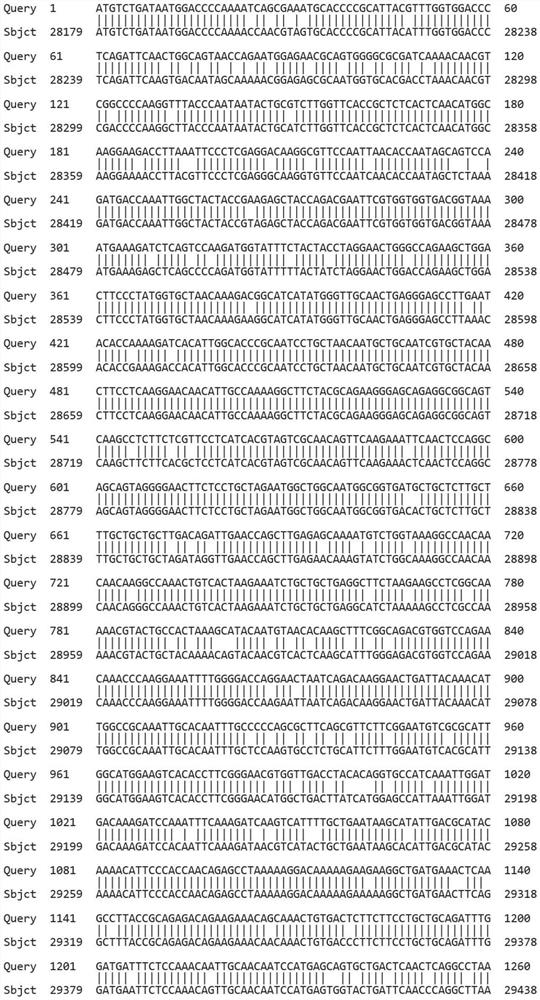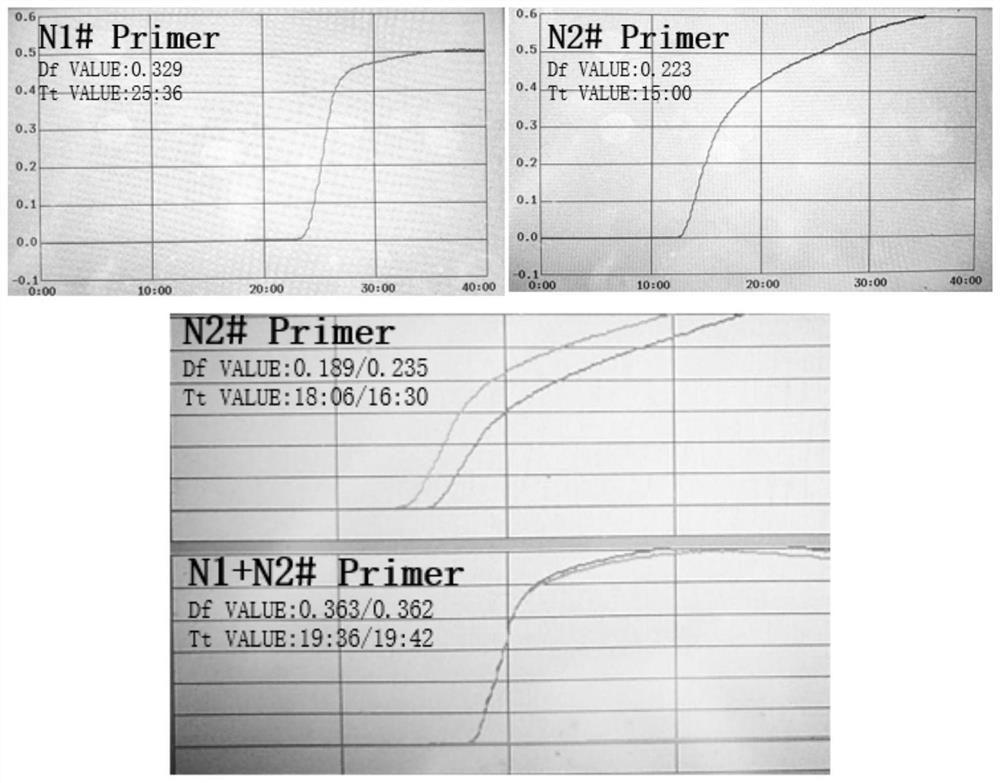Primer group for LAMP (loop-mediated isothermal amplification) detection of novel 2019 coronavirus, dual constant-temperature chromogenic kit and detection method
A coronavirus and primer set technology, applied in the biological field, can solve the problems of reagent shortage, cumbersome operation, and inability to popularize, and achieve the effects of enhanced specificity and sensitivity assurance, mature and stable technology, and low testing cost
- Summary
- Abstract
- Description
- Claims
- Application Information
AI Technical Summary
Problems solved by technology
Method used
Image
Examples
Embodiment 1
[0027] Example 1 Screening of Primer Sets for Double Constant Temperature Chromogenic Amplification of N Gene
[0028] 1.1 Sequence alignment of specific amplified gene fragments
[0029] 1.1.1 Intraspecies conservative comparison
[0030] The new coronavirus is a single-stranded positive-strand RNA virus with an envelope and a genome length of about 30Kb. Four structural proteins play an important role in virion assembly. The S gene, which encodes the spike glycoprotein, is the protein used to coat the virus. M gene, which encodes membrane glycoprotein, is responsible for the transmembrane transport of nutrients, budding and release of nascent viruses, and the formation of viral outer envelopes. The E gene is a very short coding 75 amino acid small envelope glycoprotein, which can bind to the envelope. The N gene, which encodes the nucleocapsid protein, a structural protein involved in virion assembly, plays a key role in viral transcription and assembly efficiency.
[0...
Embodiment 2
[0063] The optimization of embodiment 2 S gene constant temperature chromogenic amplification detection system
[0064] 2.1 Establishment of constant temperature chromogenic amplification reaction system
[0065] Use 10 5 U / L Bst enzyme, 4×10 6 U / L AMV enzyme, 8×10 5 U / L RNasin, 200mM dNTPs, 10mM Tris-HCl (pH=8.3), 20mM KCl, 3.5mM MgCl 2 Prepare a premixed reaction solution for constant temperature chromogenic amplification, use the detection primers for the novel coronavirus N gene confirmed in Example 1 to prepare a double constant temperature chromogenic amplification detection reaction system for the novel coronavirus N gene, mix it and place it in a thermostat Isothermal chromogenic amplification was carried out.
[0066] The reaction conditions are:
[0067] Constant temperature water bath: react at 63°C for 30 minutes.
[0068] Or isothermal amplification instrument: react at 63°C for 30 minutes.
[0069] 2.2 The establishment and optimization results of the cons...
Embodiment 3
[0074] Example 3 Sensitivity Verification of N Gene Double Constant Temperature Chromogenic Amplification Screening Detection Method
[0075] Dilute the N protein gene in vitro transcription RNA plasmid positive control sample with a 10-fold difference, and the gradient concentrations are 1ng / μL, 100pg / μL, 10pg / μL, 1pg / μL, 100fg / μL, 10fg / μL, 1fg / μL , detected by the constant temperature chromogenic amplification reaction system in Example 2, the results showed that within 45 minutes, two parallels of 10 fg were stably detected, and only one of the two parallels of 1 fg was detected, and the detection limit was 10 fg.
PUM
 Login to View More
Login to View More Abstract
Description
Claims
Application Information
 Login to View More
Login to View More - R&D
- Intellectual Property
- Life Sciences
- Materials
- Tech Scout
- Unparalleled Data Quality
- Higher Quality Content
- 60% Fewer Hallucinations
Browse by: Latest US Patents, China's latest patents, Technical Efficacy Thesaurus, Application Domain, Technology Topic, Popular Technical Reports.
© 2025 PatSnap. All rights reserved.Legal|Privacy policy|Modern Slavery Act Transparency Statement|Sitemap|About US| Contact US: help@patsnap.com



